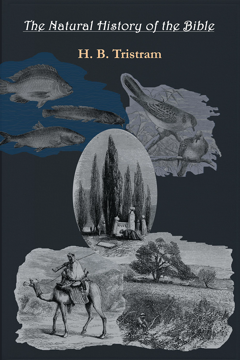H. B. Tristram
The Physical Geography, Geology, and Meteorology of the Holy Land
Series: Kiraz Theological Archive 11
ISBN: 1-59333-482-6
Tristram was among the earliest scholars to attempt a documentation of the physical landscape of the Holy Land. This study describes the geography, geology, meteorology, zoology, and botany of the land of the Bible, as experienced in the nineteenth century.
$215.00 (USD)
Bible Places; or The Topography of the Holy Land
ISBN: 1-59333-142-8
This book aims to provide a brief, yet very informative description of every Holy Land site mentioned in the Bible. Relying on the extensive research of the Palestinian Exploration Fund, Tristram's work afforded a new and vividly descriptive perspective on the Holy Land.
$184.00 (USD)
The Land of Moab: Travels & Discoveries on the East Side of the Dead Sea & Jordan
ISBN: 1-59333-081-2
The object of Tristram's expedition was a careful examination of the then-contemporary state of a country frequently referred to in the Old Testament, and intimately connected with Jewish history, but which had not been traversed at leisure by any explorer since the fall of the Roman empire.
$195.00 (USD)
Land of Israel. A Journey of Travel in Palestine
ISBN: 1-931956-57-X
Tristram says "In the belief that this field was not yet exhausted, I spent, accompanied by a small party of friends, in 1863-4, a period of nearly ten months in the examination chiefly of the geology and natural history of the country."
$200.00 (USD)
The Natural History of the Bible
A Review of the Physical Geography, Geology, And Meteorology of the Holy Land
ISBN: 1-931956-54-5
A review of the physical geography, geology, and meteorology of the Holy Land based on the writings of a nineteenth century traveler, H.B. Tristram, then canon of Durham. Illustrated with over one hundred drawings, the book explores the plants and animals mentioned in the Bible.
$160.00 (USD)





